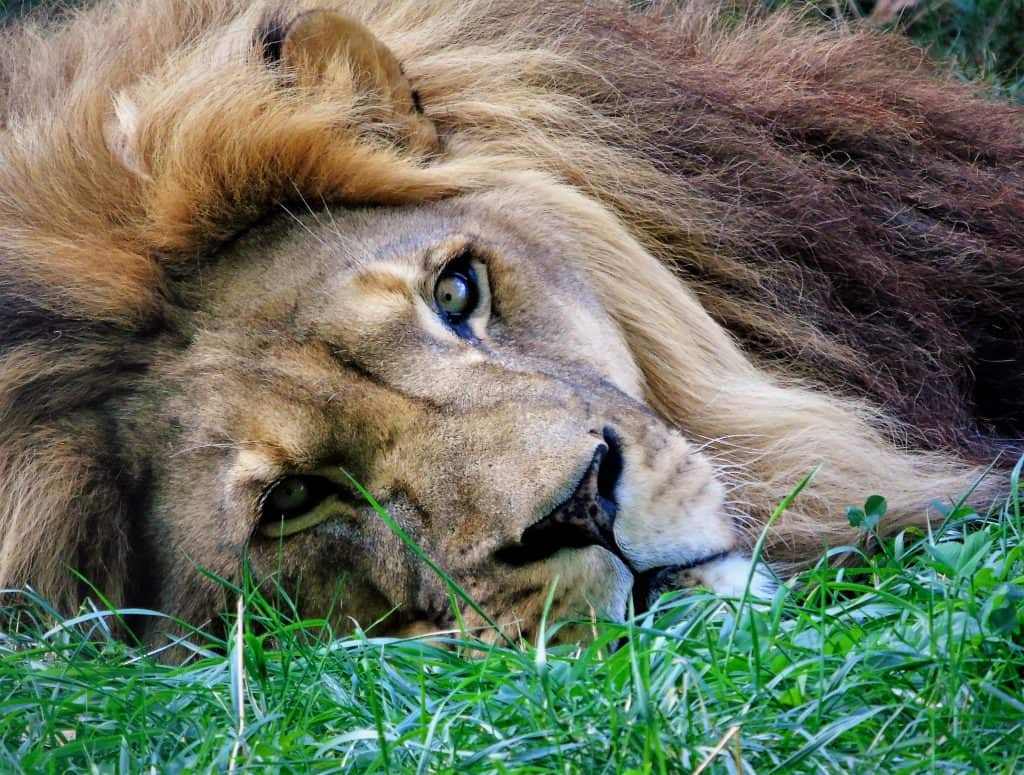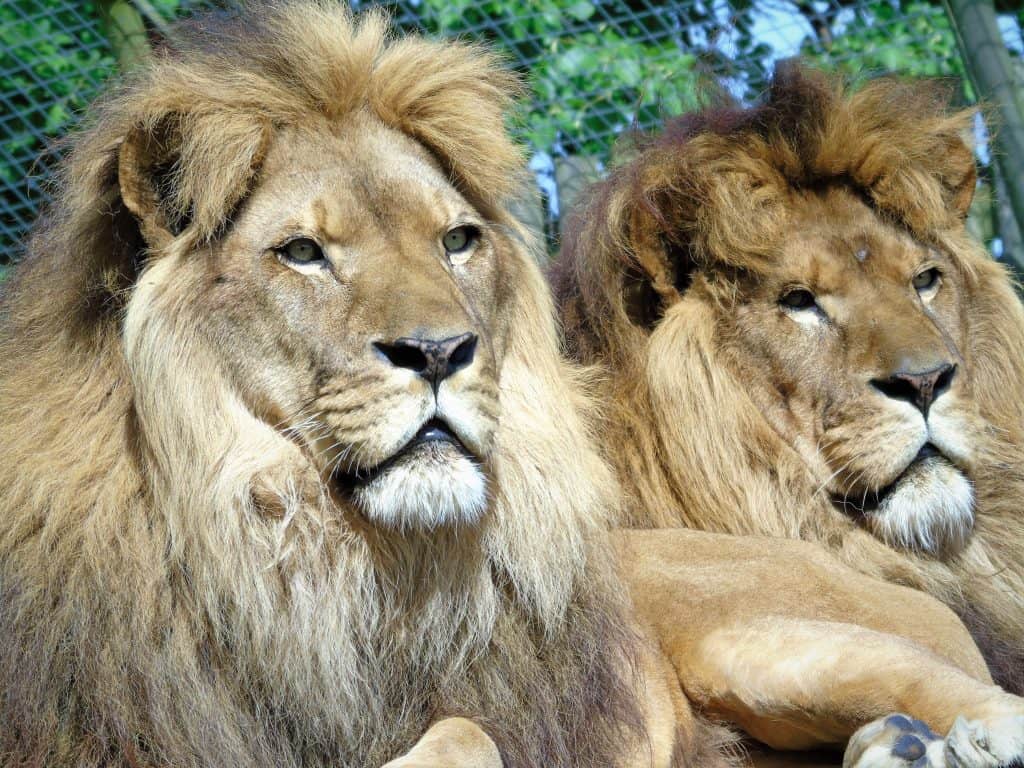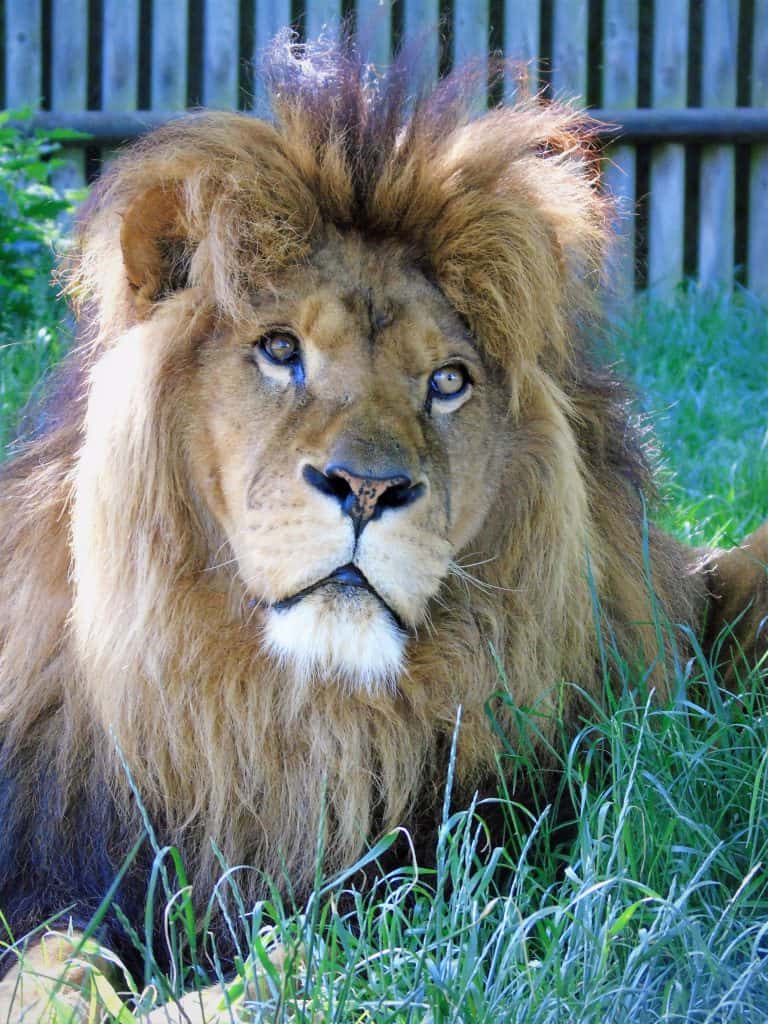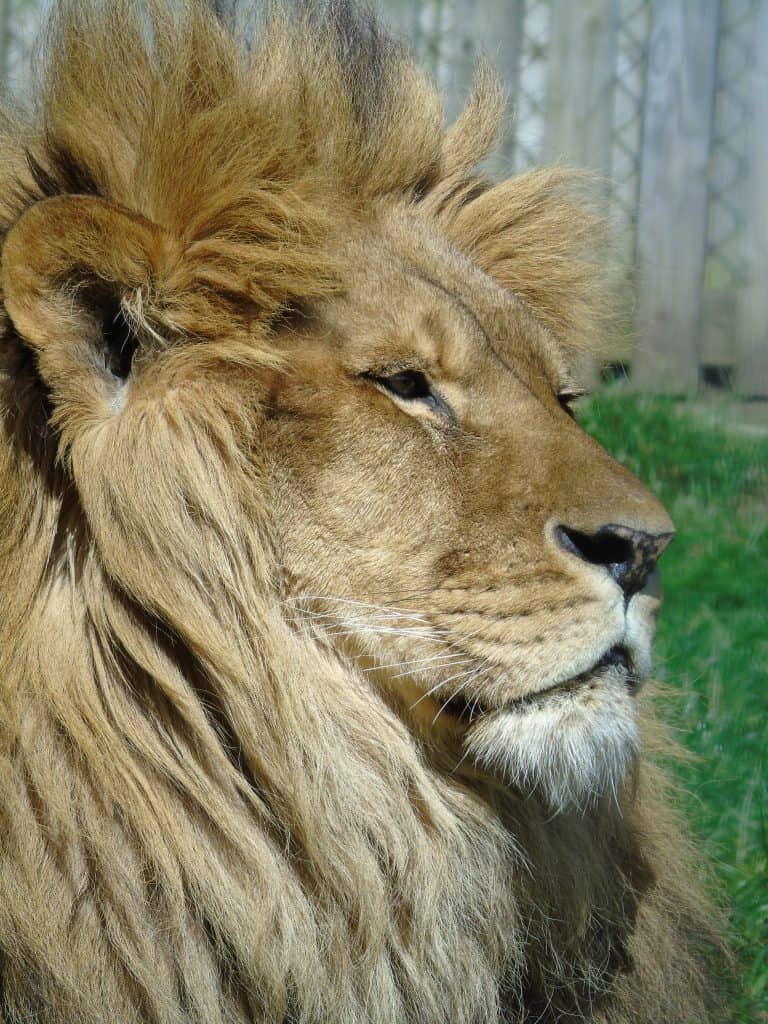So, I’m sure most of you are now aware that we recently lost one of our beloved lions, Brutus to lung cancer.

Naturally it is a heavy blow to all as he was definitely one of our most iconic residents. I mean what zoo is complete without the king of the jungle. A title his brother Clarence must now, at least for the time being, shoulder alone. A task luckily, he excels at.
I have often seen people all around me raise their head as they hear his roar echo through the park. I am being asked quite a lot about what is to become of Clarence? Will he get a girlfriend? At present we are simply monitoring him. He is an elderly lion who has always been with his brother Brutus and it would be ill advised to rush into putting another lion in with him.

There have been occasions where lions and lionesses have been put together and it has been unsuccessful. This has happened with well socialised animals.
Our lions’ background
Brutus and Clarence came from a circus where they were very badly treated. Clarence has a very obvious scar on his hip and one eye darker than the other. This is where a blunt force trauma to the head has caused his inner eyelid to permanently close. These are just some of the scars we can see. They have come a very long way from what they were like when they first arrived and we have been blessed to know these two gorgeous boys.
Right now, all we can do is spoil Clarence with attention, enrichment and treats. All of which we have a plentiful supply.

In memory of Brutus and to celebrate Clarence I have decided to dedicate my blog this week to them and focus on lions.
Lions in the wild
According to the IUCN red list there are 23,000 – 39,000 lions left in the wild and are classed as Vulnerable with a decreasing population. Most of which are African, but a smaller population are Asiatic. These are a little smaller than the African and have less substantial manes. They also live in smaller prides. All the Asiatic lions live in Gujarat, India.
Lions in general are formidable predators on their own but will often live in prides. These average around 4-6 adults and then their cubs but prides of up to 40 individuals have been recorded. These share all responsibilities with some looking after all the cubs while the others hunt for food. Hunting is also a group activity. While some members get into position, others will lead the prey to them showing true organisation. Working as a team means they are able to take down larger prey species such as wildebeest, zebra and even rhino. This is important as lions eat a lot to cover their large size. An adult can weigh up to 30 stone and eat up to 40 kg of food.
Habitat can vary from savannah to forest, but they can also be found in the outskirts of deserts. In these harsh environments where food is scarcer, they have been known to hunt and take down giraffe. To put this into perspective, the kick of a giraffe can kill an adult lion.
Another interesting fact stated by WWF is that lions are the only cats who roar together even the cubs get involved. I’m sure Clarence won’t say no to you joining in with him when you’re next at the park.
‘Mane’ threats
The biggest threat for lions in the wild, sadly comes down to people. Habitat loss is affecting the lions directly forcing them closer to human settlements, where they are killed to safeguard people but also indirectly as their prey is finding less food as well. This means less food for the lions and forcing them to look for alternatives. This alternative may well be a farmer’s livestock. This results in retaliation from the farmer for loss of income. Climate change is also leading to a shortage of food for the lion’s prey and so livestock is turned to again.
Anyone who has been to the tiger talk here at Wingham will know about traditional Chinese medicine. Tiger bone wine is believed to be a cure for everything. Unfortunately, lion bone is being used as an alternative and so are being killed as well.
All in all, the future is uncertain for these magnificent beasts, and it is down to all of us to try and change it.



